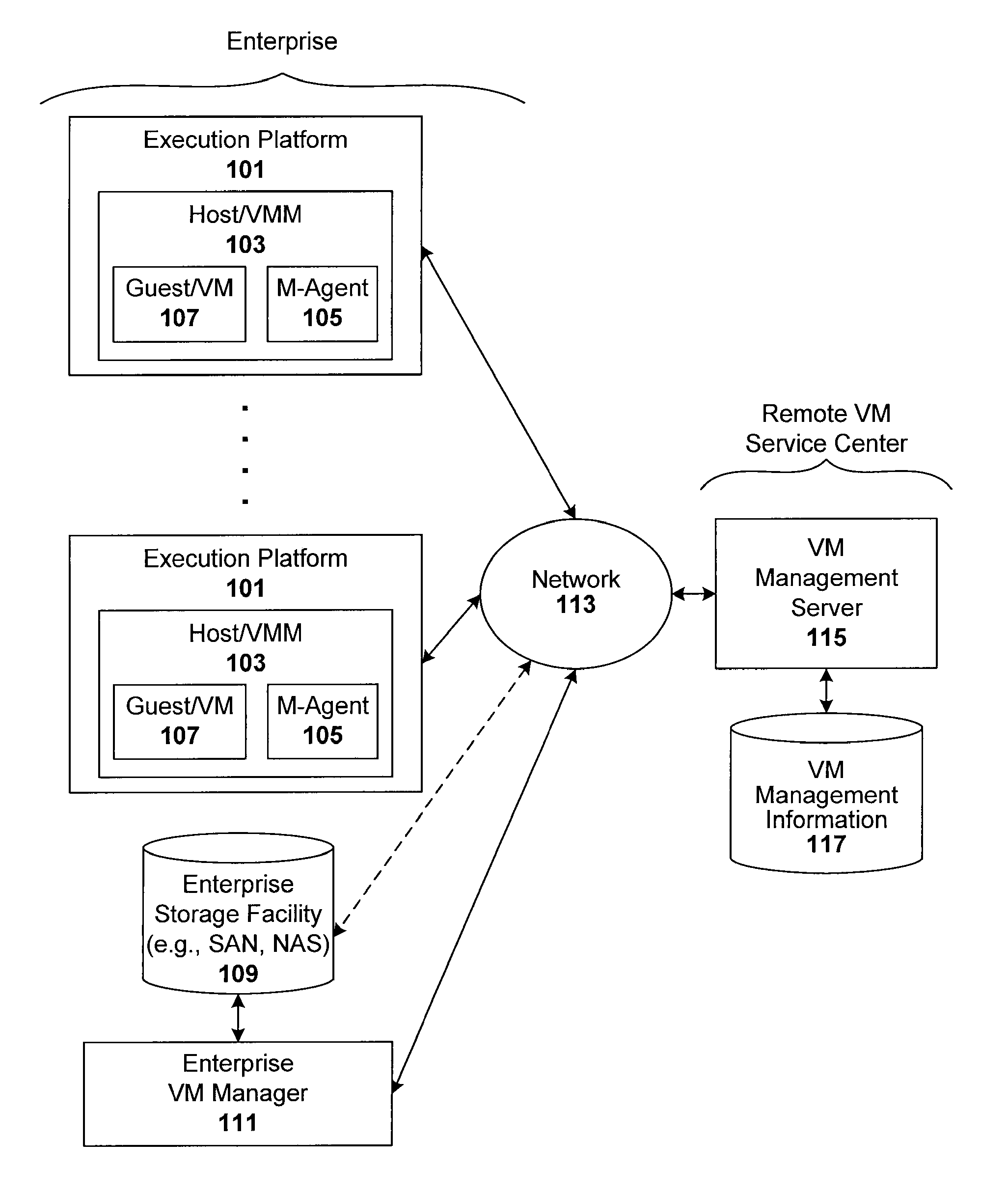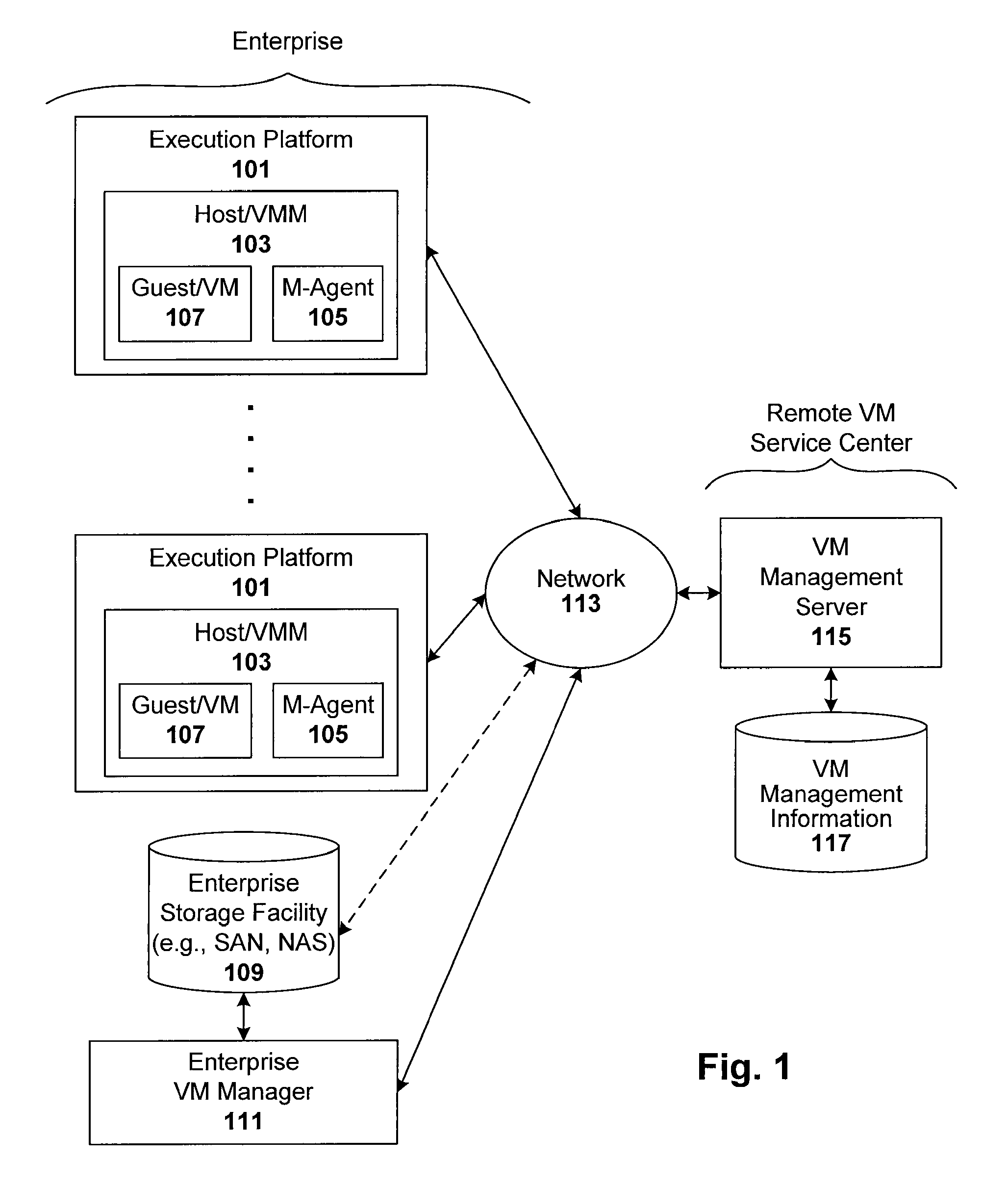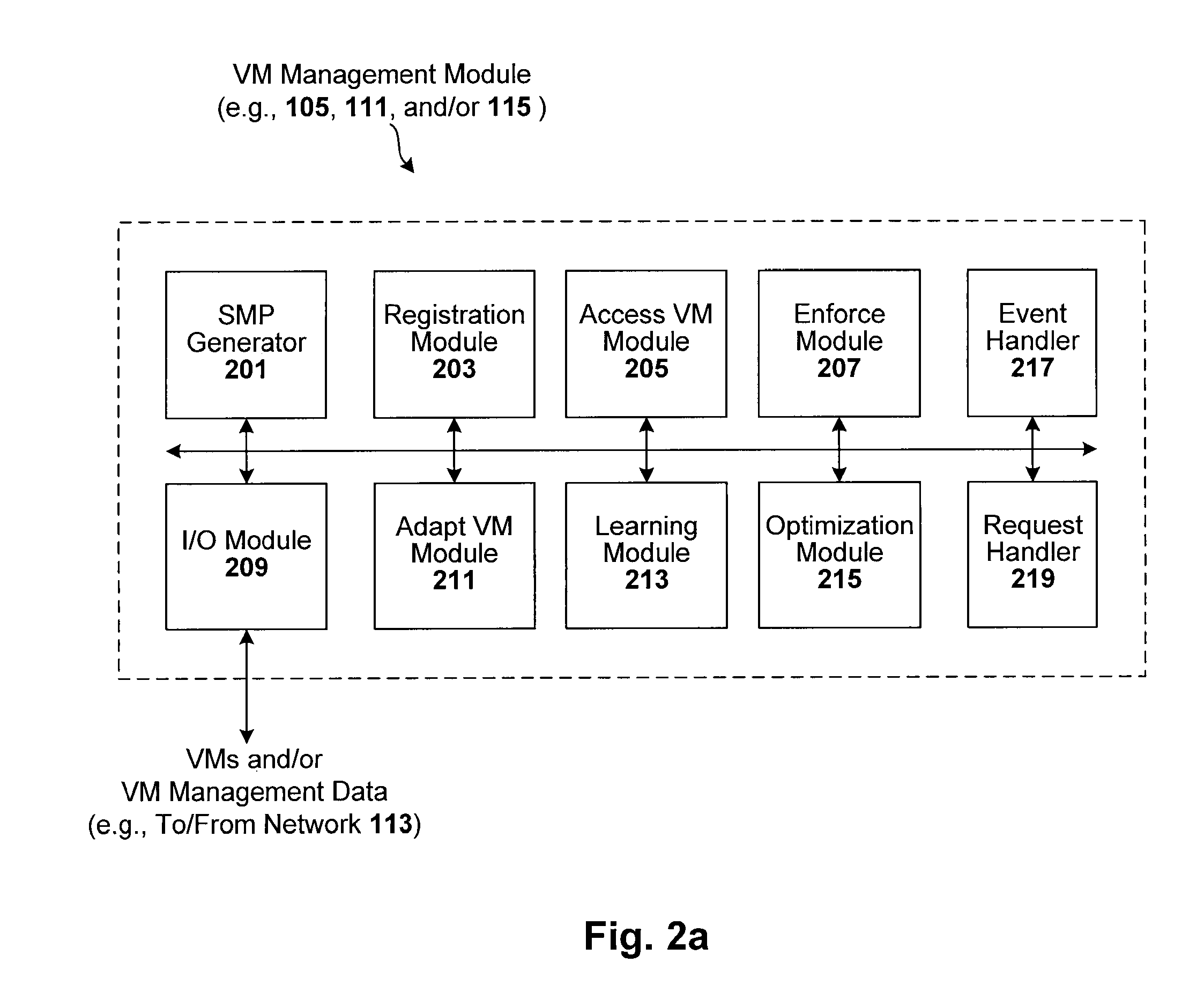Registering and accessing virtual systems for use in a managed system
a virtual system and managed system technology, applied in the field of virtual execution environments, can solve the problems of vms having a very difficult task in determining, vms have a very difficult time keeping up with all the vms coming and going,
- Summary
- Abstract
- Description
- Claims
- Application Information
AI Technical Summary
Benefits of technology
Problems solved by technology
Method used
Image
Examples
Embodiment Construction
[0027]Techniques are disclosed for controlling and managing virtual machines and other such virtual systems. Traditional VMM / host environments employ the concept of admission control, which is quantitative in nature, in that VMs are only allowed to execute if there are enough resources (e.g., memory, swap space and bandwidth) for the VM to execute and run. One technique described herein is qualitative, in that VM execution approval is based on compliance with various policies, such as those regarding one or more of VM content, VM characteristics, execution context (e.g., production vs. test), change management, configuration management, asset management, version control, security management, license management, and resource management. These policies can be stored in a single or multiple locations. They can be contained in files, databases, directories, repositories, or other external policy stores, such as a CMDB, inventory database, or version control system. The techniques can be...
PUM
 Login to View More
Login to View More Abstract
Description
Claims
Application Information
 Login to View More
Login to View More - R&D
- Intellectual Property
- Life Sciences
- Materials
- Tech Scout
- Unparalleled Data Quality
- Higher Quality Content
- 60% Fewer Hallucinations
Browse by: Latest US Patents, China's latest patents, Technical Efficacy Thesaurus, Application Domain, Technology Topic, Popular Technical Reports.
© 2025 PatSnap. All rights reserved.Legal|Privacy policy|Modern Slavery Act Transparency Statement|Sitemap|About US| Contact US: help@patsnap.com



